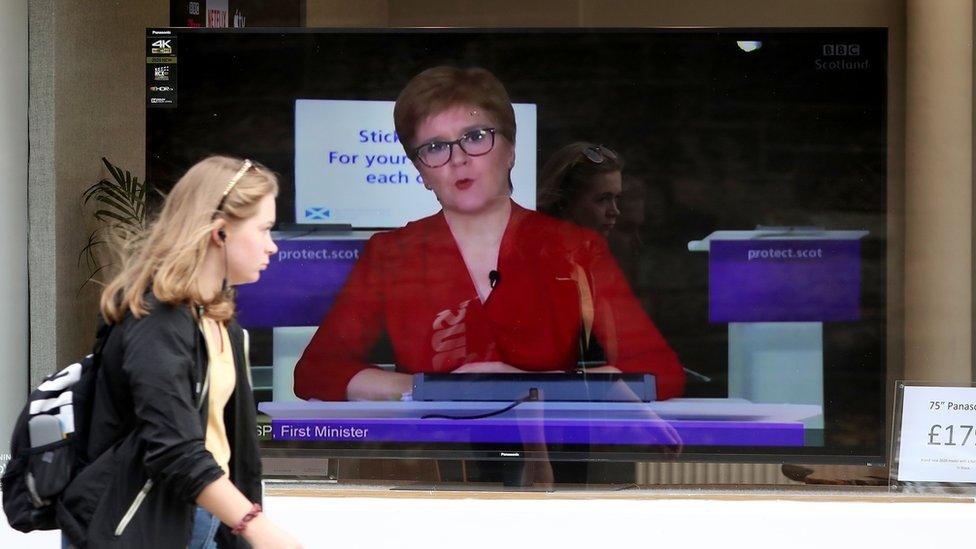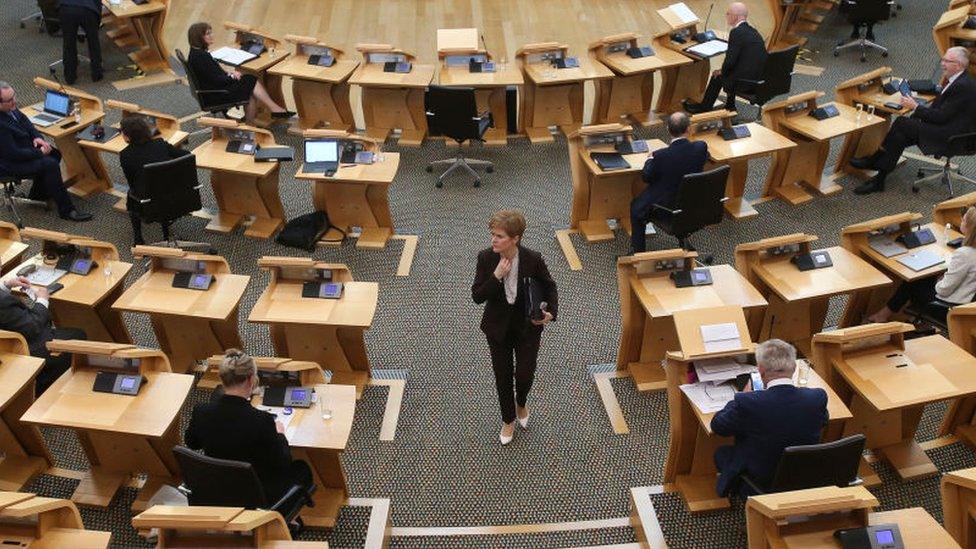Covid in Scotland: Sturgeon to set out five-tier alert system
- Published
- comments

Ms Sturgeon will set out plans for the new system at her daily coronavirus briefing
The Scottish government is to publish details later of a new five-tier alert system of Covid-19 restrictions.
The new system - which adds two levels to the three tiers used in England - will come into force from 2 November.
It will set out different levels of measures that can be applied either nationally or regionally, depending on the rate of infection across Scotland.
First Minister Nicola Sturgeon said this would provide clarity about rules and flexibility for different areas.
The new "strategic framework" will also include details of support for businesses hit by restrictions and a new testing strategy.
Temporary restrictions targeting the hospitality industry in the central belt of Scotland in particular have been extended to cover the gap until the new system comes into force.
Details of how it will work are to be published on Friday, but Ms Sturgeon has already revealed that it will feature five different levels.
The three tiers currently used in the English system - of "medium", "high" and "very high" alert - will be broadly equivalent to the middle of the Scottish system.
An extra level will be added at the bottom, which Ms Sturgeon said would be "the closest to normality that we can reasonably expect to live with until we have a vaccine".
And another tier will be added at the top, featuring harsh restrictions similar to those imposed at the outset of the pandemic in March.
Ms Sturgeon said: "When England published their [system] the chief medical officer in England at the time said he thought the top level was not enough to necessarily, in all circumstances, get the virus down. So we think we need one above that which is closer to a full lockdown if things got to be that serious."

MSPs will hold a vote on the proposed framework next week
Opposition parties were consulted while the new framework was being drawn up, and MSPs will put the broad principles to a vote when Holyrood returns from its half term recess.
Ms Sturgeon has said decisions about where levels will be set for each region of Scotland would be taken on a "collaborative" basis, but said she would ultimately bear accountability for them.
The first minister said she wanted to avoid a standoff like that between the UK government and local leaders in the Greater Manchester region, adding: "I believe it's really important that the buck for these difficult decisions stops here, with me and government."
Testing strategy
The strategic framework comes alongside an expanded testing strategy, which includes a commitment to expand Scotland's testing capacity to 65,000 tests per day by the end of the year.
This will include boosting the number of tests that can be processed at the UK government's Lighthouse laboratory in Glasgow, as well as NHS facilities and some smaller commercial ones.
New NHS regional hubs are under construction in Grampian, Lothian and Greater Glasgow and Clyde, and are expected to take on all of the daily routine testing done in care homes around Scotland.
Alongside the Scottish government's paper, the Office for National Statistics is expected to publish the initial results of a Covid infection survey north of the border.
This estimates how many people in private households were infected with the virus over a two-week period, which Ms Sturgeon said would provide "an additional tool to track the spread and prevalence of the virus and tailor our response to it accordingly".

